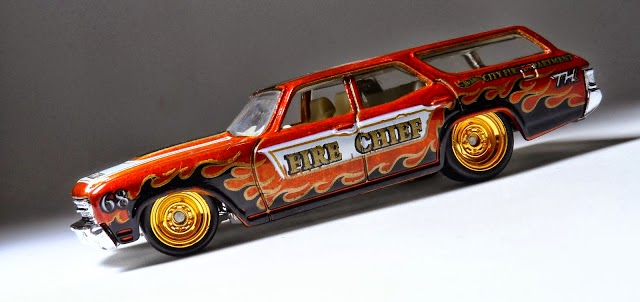The Chevrolet Chevelle was a mid-sized automobile produced by the Chevrolet division of General Motors in three generations for the 1964 through 1977 model years. Part of the GM A-Body platform, the Chevelle was one of Chevrolet's most successful nameplates. Body styles include coupes, sedans, convertibles and station wagons. Super Sport versions were produced through the 1973 model year, and Lagunas from 1973 through 1976. After a three-year absence, the El Camino was reintroduced as part of the new Chevelle lineup. The Chevelle also provided the platform for the Monte Carlo introduced in 1970. The Malibu, the top of the line model through 1972, replaced the Chevelle nameplate for the redesigned, downsized 1978 models.
The Chevelle SS represented Chevrolet's entry into the muscle car battle. Early 1964 and 1965 Chevelles had a Malibu SS badge on the rear quarter panel. Chevelles with the mid-1965 Z16 option, priced at US$1,501 in 1965,[2] had the emblem on the front fender as well as distinct in-house style numbers: 737 for the hardtop and 767 for the convertible.[3] The $162 Super Sport package was available on the upscale Malibu two-door hardtop and convertible models; the option added special exterior brightwork with SS emblems and the 14-inch full-disc wheel covers from the Impala SS. Inside, the vinyl bucket-seat interior featured a floor console for models equipped with the optional Muncie aluminum four-speed-manual or Powerglide two-speed automatic instead of the standard three-speed manual. Malibu SS also got a four-gauge cluster in place of engine warning lights, and a dash-mounted tachometer was optional. The available 283-cubic-inch four-barrel V8 engine rated at 220-horsepower was the same rating as the 1957 Chevy Power-Pak 283 engine.
Photo of the minisinfoco, enjoy!














.JPG)







.JPG)




